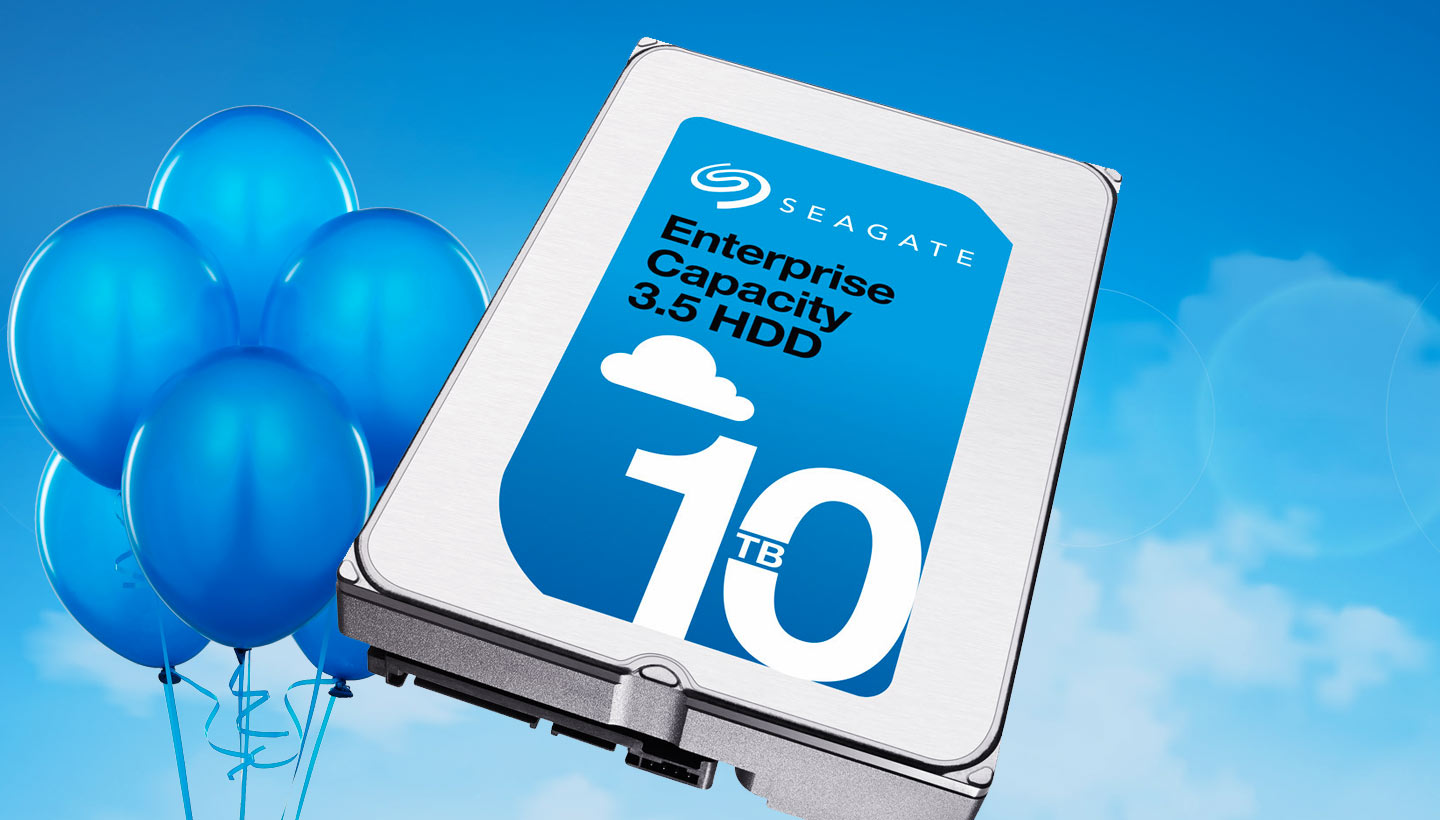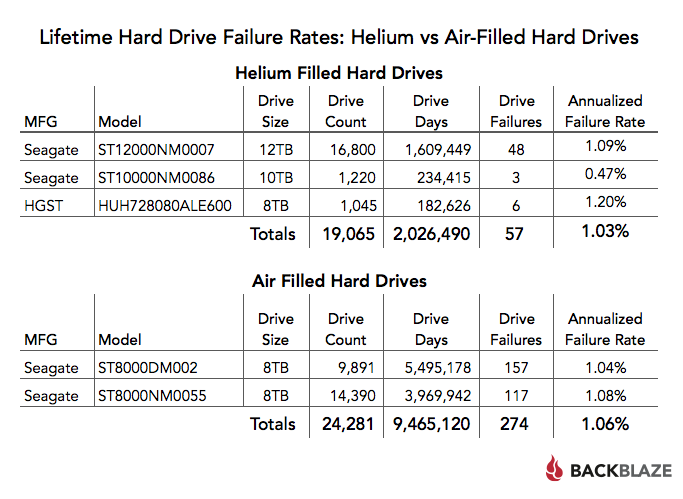In November 2013, the first commercially available helium-filled hard drive was introduced by HGST, a Western Digital subsidiary. The 6 TB drive was not only unique in being helium-filled, it was for the moment, the highest capacity hard drive available. Fast forward a little over 4 years later and 12 TB helium-filled drives are readily available, 14 TB drives can be found, and 16 TB helium-filled drives are arriving soon.
Backblaze has been purchasing and deploying helium-filled hard drives over the past year and we thought it was time to start looking at their failure rates compared to traditional air-filled drives. This post will provide an overview, then we’ll continue the comparison on a regular basis over the coming months.
The Promise and Challenge of Helium Filled Drives
We all know that helium is lighter than air — that’s why helium-filled balloons float. Inside of an air-filled hard drive there are rapidly spinning disk platters that rotate at a given speed, 7200 rpm for example. The air inside adds an appreciable amount of drag on the platters that in turn requires an appreciable amount of additional energy to spin the platters. Replacing the air inside of a hard drive with helium reduces the amount of drag, thereby reducing the amount of energy needed to spin the platters, typically by 20%.
We also know that after a few days, a helium-filled balloon sinks to the ground. This was one of the key challenges in using helium inside of a hard drive: helium escapes from most containers, even if they are well sealed. It took years for hard drive manufacturers to create containers that could contain helium while still functioning as a hard drive. This container innovation allows helium-filled drives to function at spec over the course of their lifetime.
Checking for Leaks
Three years ago, we identified SMART 22 as the attribute assigned to recording the status of helium inside of a hard drive. We have both HGST and Seagate helium-filled hard drives, but only the HGST drives currently report the SMART 22 attribute. It appears the normalized and raw values for SMART 22 currently report the same value, which starts at 100 and goes down.
To date only one HGST drive has reported a value of less than 100, with multiple readings between 94 and 99. That drive continues to perform fine, with no other errors or any correlating changes in temperature, so we are not sure whether the change in value is trying to tell us something or if it is just a wonky sensor.
Helium versus Air-Filled Hard Drives
There are several different ways to compare these two types of drives. Below we decided to use just our 8, 10, and 12 TB drives in the comparison. We did this since we have helium-filled drives in those sizes. We left out of the comparison all of the drives that are 6 TB and smaller as none of the drive models we use are helium-filled. We are open to trying different comparisons. This just seemed to be the best place to start.
The most obvious observation is that there seems to be little difference in the Annualized Failure Rate (AFR) based on whether they contain helium or air. One conclusion, given this evidence, is that helium doesn’t affect the AFR of hard drives versus air-filled drives. My prediction is that the helium drives will eventually prove to have a lower AFR. Why? Drive Days.
Let’s go back in time to Q1 2017 when the air-filled drives listed in the table above had a similar number of Drive Days to the current number of Drive Days for the helium drives. We find that the failure rate for the air-filled drives at the time (Q1 2017) was 1.61%. In other words, when the drives were in use a similar number of hours, the helium drives had a failure rate of 1.06% while the failure rate of the air-filled drives was 1.61%.
Helium or Air?
My hypothesis is that after normalizing the data so that the helium and air-filled drives have the same (or similar) usage (Drive Days), the helium-filled drives we use will continue to have a lower Annualized Failure Rate versus the air-filled drives we use. I expect this trend to continue for the next year at least. What side do you come down on? Will the Annualized Failure Rate for helium-filled drives be better than air-filled drives or vice-versa? Or do you think the two technologies will be eventually produce the same AFR over time? Pick a side and we’ll document the results over the next year and see where the data takes us.





